In the 1997 movie "Contact," adapted from Carl Sagan's 1985 novel, the lead character scientist Ellie Arroway (played by actor Jodi Foster) takes a s
In the 1997 movie “Contact,” adapted from Carl Sagan’s 1985 novel, the lead character scientist Ellie Arroway (played by actor Jodi Foster) takes a space-alien-built wormhole ride to the star Vega. She emerges inside a snowstorm of debris encircling the star… but no obvious planets are visible.
It looks like the filmmakers got it right, reported NASA.

A team of astronomers at the University of Arizona, Tucson used NASA’s Hubble and James Webb space telescopes for an unprecedented in-depth look at the nearly 100-billion-mile-diameter debris disk encircling Vega. “Between the Hubble and Webb telescopes, you get this very clear view of Vega. It’s a mysterious system because it’s unlike other circumstellar disks we’ve looked at,” said Andras Gáspár of the University of Arizona, a member of the research team. “The Vega disk is smooth, ridiculously smooth.”
The big surprise to the research team is that there is no obvious evidence for one or more large planets plowing through the face-on disk like snow tractors. “It’s making us rethink the range and variety among exoplanet systems,” said Kate Su of the University of Arizona, lead author of the paper presenting the Webb findings, reported NASA.
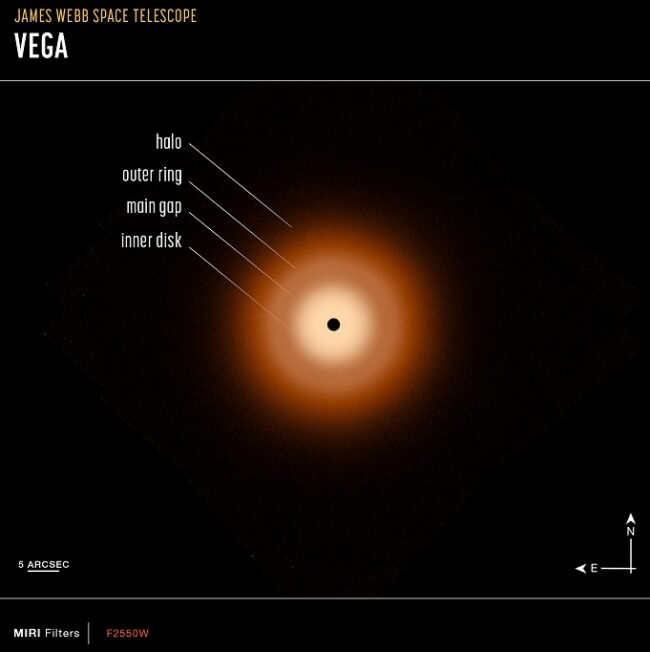
Webb sees the infrared glow from a disk of particles the size of sand swirling around the sizzling blue-white star that is 40 times brighter than our Sun. Hubble captures an outer halo of this disk, with particles no bigger than the consistency of smoke that are reflecting starlight.
The distribution of dust in the Vega debris disk is layered because the pressure of starlight pushes out the smaller grains faster than larger grains. “Different types of physics will locate different-sized particles at different locations,” said Schuyler Wolff of the University of Arizona team, lead author of the paper presenting the Hubble findings. “The fact that we’re seeing dust particle sizes sorted out can help us understand the underlying dynamics in circumstellar disks”, reported NASA.
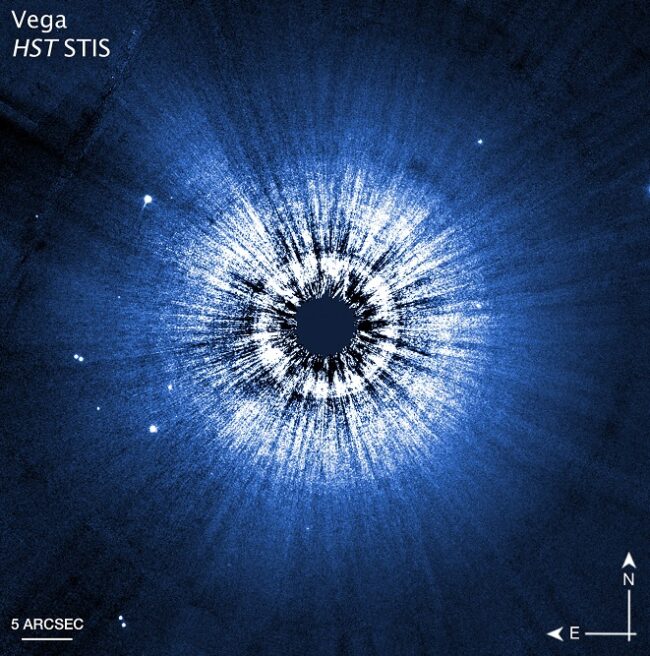
The Vega disk does have a subtle gap, around 60 AU (astronomical units) from the star (twice the distance of Neptune from the Sun), but otherwise is very smooth all the way in until it is lost in the glare of the star. This shows that there are no planets down at least to Neptune-mass circulating in large orbits, as in our solar system, say the researchers.
“We’re seeing in detail how much variety there is among circumstellar disks, and how that variety is tied into the underlying planetary systems. We’re finding a lot out about the planetary systems, even when we can’t see what might be hidden planets,” added Su. “There’s still a lot of unknowns in the planet-formation process, and I think these new observations of Vega are going to help constrain models of planet formation”, reported NASA.
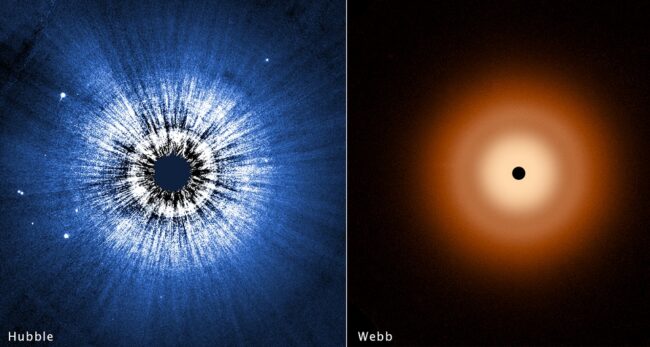
“Vega continues to be unusual,” said Wolff. “The architecture of the Vega system is markedly different from our own solar system where giant planets like Jupiter and Saturn are keeping the dust from spreading the way it does with Vega.”
For comparison, there is a nearby star, Fomalhaut, which is about the same distance, age and temperature as Vega. But Fomalhaut’s circumstellar architecture is greatly different from Vega’s. Fomalhaut has three nested debris belts, reported NASA.
Planets are suggested as shepherding bodies around Fomalhaut that gravitationally constrict the dust into rings, though no planets have been positively identified yet. “Given the physical similarity between the stars of Vega and Fomalhaut, why does Fomalhaut seem to have been able to form planets and Vega didn’t?” said team member George Rieke of the University of Arizona, a member of the research team. “What’s the difference? Did the circumstellar environment, or the star itself, create that difference? What’s puzzling is that the same physics is at work in both,” added Wolff.
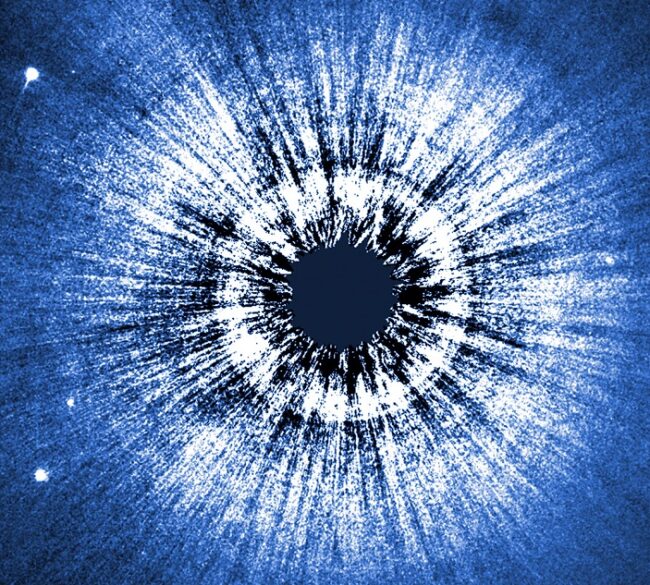
Located in the summer constellation Lyra, Vega is one of the brightest stars in the northern sky. Vega is legendary because it offered the first evidence for material orbiting a star, presumably the stuff for making planets, as potential abodes of life. This was first hypothesized by Immanuel Kant in 1775. But it took over 200 years before the first observational evidence was collected in 1984. A puzzling excess of infrared light from warm dust was detected by NASA’s IRAS (Infrared Astronomy Satellite). It was interpreted as a shell or disk of dust extending twice the orbital radius of Pluto from the star, as reported by NASA.
All Credit To: NASA, ESA, CSA


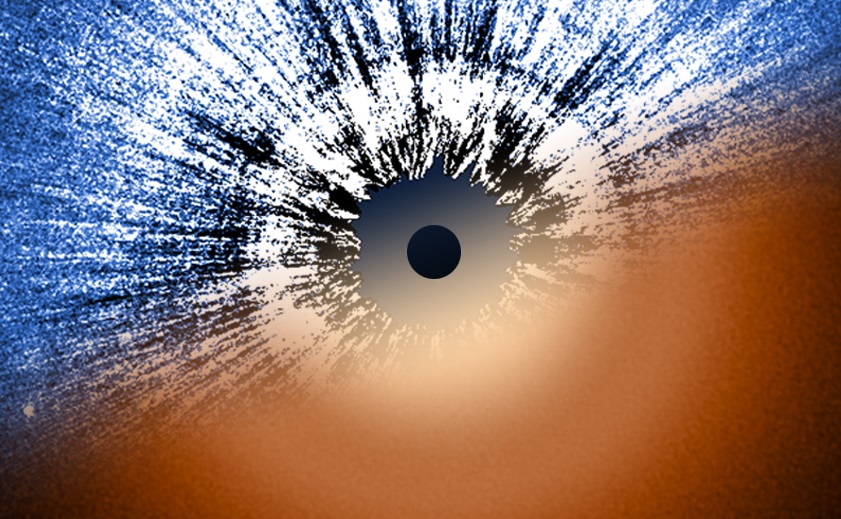
COMMENTS